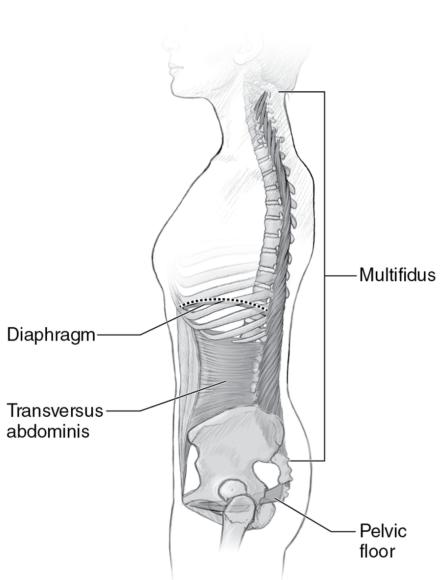What is the center?
This is an excerpt from Pilates for Rehabilitation by Samantha Wood.
In Pilates, centering yourself means more than finding your center of gravity; it means uniting body, mind, and spirit. (Isacowitz 2014, 9)
Physically speaking, finding one's center refers simply to the place in one's body that is one's center of gravity. This will be slightly different for each individual, based on his or her specific anatomy. But in Pilates, the word center means much more. The concept that all movement originates from the center or core is a common theme in Pilates. It is often termed the powerhouse in Pilates; it is described by Isacowitz as the internal support system; and it is sometimes referred to as the local muscle system in the rehabilitation realm (see figure 2.2). Whichever term you prefer, we are talking about the deep, intrinsic muscles of the trunk. These transversus abdominis, multifidi, diaphragm, and pelvic floor muscles attach directly to the spine and offer stabilization. Note that none of these muscles can be easily accessed, as they are deep lying and are not developed in the same way that other skeletal muscles are, such as the biceps or quadriceps. Perhaps this is why the mind - body approach of Pilates works so well in spinal stabilization; it allows us to get deeper and facilitates this neuromuscular connection.

Figure 2.2 The local muscle system or internal support system.
SHOP

Get the latest insights with regular newsletters, plus periodic product information and special insider offers.
JOIN NOW


